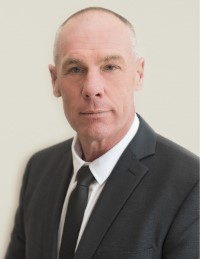Report: Safe Work Month Event 2017: Technology’s Impact on Safety
by Fil
Naomi Campbell
Naomi Kemp is a certified OHS Professional, with experience working with WHS Regulators and leaders in private industry. She is the founder of Safe Expectations and the Convenor of Young Safety Professionals, and is passionate about personal health and wellbeing. Naomi is an expert in facilitating enforceable undertakings and innovative safety thinking.
Naomi discussed some of the ways in which the advancement of technology has led to a lack of personal interaction, and the resulting risks we run by allowing this lack to persist and to extrapolate. She emphasised the fact that engagement of any variety hinges upon interaction and participation—highlighting how an over-dependence on technology can hinder said participation.
She noted how employee engagement is vital to performance: To safety, low attrition, and worker satisfaction, as well as to productivity and efficiency.
Read more about Naomi at: http://www.safeexpectations.com.au/

Peter Gould
Peter Gould is Service Manager for workplace health, safety, and wellbeing at Redland City Council. A registered nurse, with a postgraduate specialty in Occupational Health and Safety, he is an experienced facilitator, trainer, assessor, and RTO manager. Peter has a particular interest in the Public Safety industry, and cultivates a strong, professional investment in safety and health at work.
Peter discussed the use of interactive analytics to improve safety performance, and the use of auditing applications to identify key risk areas. For example, advances in mobile technology have allowed for the instant reporting of hazards and incidents. A huge variety of safety tools, guides, and calculators have emerged, allowing workers to more effectively make risk assessments, and ensure their own safety.
He also took note of exoskeletons, an emerging technology with myriad uses. Exoskeletons can allow workers to hold and support heavy tools, can decrease fatigue, and can provide extended support to stress, such as back support when bending down. Increased grip strength, and machines which transfer weight directly into the ground also fall into this category. The potential for drastic improvements to safety is immense.

Glen Damro
Glen Damro is a consulting services expert with a demonstrated history working in a range of industries: maritime, aviation, oil and gas, security, and law enforcement. He is adept at operational management, risk assessment, and business strategy. He’s been a training director and a security commander, and comes highly experienced and qualified in counter-terrorism and intelligence.
Glen discussed how the fundamentals of safety can and will shape technology for the future, while indicating that looking too far into the future may result in neglect of the present. Noting that those at the forefront of current technological revolutions are driven by a belief that there may be a ‘digital solution for everything’, he emphasised the challenge this presents—While the fields of robotics, artificial intelligence, quantum computing, and medical advancements are extending life expectancy, and improving quality of life, keeping people safe requires constant attention in the face of constant change.
Noting that a safe work environment can: Retain staff, maximise employee productivity, minimise injury and illness, reduce the costs of injury and compensation, and ensure all legal obligations are met, Glen stressed that each aforementioned benefit can potentially be compromised by the impact of technology on safety.
